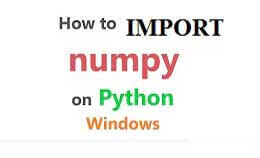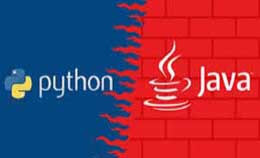How to use while loop in python 3
In this tutorial, we are going to discuss How to use while loop in python 3 with the syntax, example, flowchart, etc and also its use. Any language has the loops which are to be understood by the user for the development of applications. In the programming, language loops are used to repeat the code or the block of code. The while loop is known as the commanding loop in the programming language like the for loop.
In this loop, we can execute the statements set as long as the condition becomes true.
In some companies, the role of HR is to recruit the good employee on the place of the experienced candidate so he will continue the process of the interview until they get the perfect employee. This loop is found in many programming languages and the exact function of the loop will differ from language to language. It is used in the python language and for and if-else loop. The while loop will repeat the code until the given condition satisfies. Also if the condition becomes false the line will go after the loop in the program. The condition where the while loops are checked are as follows (True/false):-
If the condition is a true block of statement is executed.
If condition is false then block of statement in while loop is skipped and not executed.
The Syntax for while loop
The syntax of the while loop is given and explained as follows,
while expression:
statements(s)
The above syntax will have the test expression which is checked and then the body of the loop is entered if the expression is true.
The statement may be single or statements and condition may be any expression as true by the non-zero value.
Then after one iteration test expression is checked again and the process will continue until test expression becomes false.
After the false, condition the control present in the program will pass line immediately to loop.
The loop is used for the iteration over code as the test expression is true.
The for loop is the same as the while loop and use is also for the repeating of codes but the main difference is that the while loop will not run n times but until defined condition meets.
In the Python programming language, the while loop is determined by indentation as body starts with indentation and ends with unindented.
The expression symbol <expr> will have one or more variables for starting the loop and modified in the body.
The expression is evaluated in Boolean context if true then loopy body gets executed.
Again expression is checked and if true then the body is executed process will continue until expression will result false.
For doing the same work again, and again, the looping concept is used.
Flowchart of while Loop

The above figure shows the flowchart of the while loop,
while(expression):
statement_1
statement_2
……
While loop will run as the expression as the condition to true and execute the program block.
In while loop condition is checked every time at beginning and the first time of the evaluation goes to false.
The use of semicolon (:) is a must at end of the while statement.
The action performed is indented by 4 spaces.
The while loop depends on the true or false condition and the execution is carried out.
The execution of the while loop and use is given as follows,
- We have to set the enviourement of coding.
- The run and the debug are carried out.
- The start of while loop is writing the commands.
- The variables are identified.
- The code is implemented inside the while loop and put the task.
Example of while loop:-
i = 1while i < 6:
print(i)
i += 1
Output:-
1
2
3
4
5
- Else statement:-
The else statement will use the else keyword in the program and once the code is run if the condition becomes true.
Example:-
i = 1
while i < 6:
print(i)
i += 1
else:
print("i is no longer less than 6")
Output:-
1
2
3
4
5
i is no longer less than 6
Continue statement:-
It is used to stop current iteration and continue with next. The following example will give the description and use of the while loop.
Example:-
i = 0
while i < 6:
i += 1
if i == 3:
continue
print(i)
Output:-
1
2
3
4
5
6
- Break statement:-
This statement uses the break keyword and stops the loop if while the condition is true. The example below will explain the importance of the break statement.
Example:-
i = 1
while i < 6:
print(i)
if (i == 3):
break
i += 1
Output:-
1
2
3
Infinite while loop:-
It will execute at infinite times and the execution will never stop. The increment operator will test the expression and loop will not stop the execution until infinite times.
Example:-
i=4
while i>0:
print('I am an infinite while loop’)
- Nested while loop:-
The loop will contain another while loop and call nested while loop.
There is some limit for loops in the nested while loop and go for many times and requires the program.
Example:-
i=1
j=5
while i<6:
while j>0:
print(i, j)
j=j-1
i=i+1
Output:-
1 5
2 4
3 3
4 2
5 1























